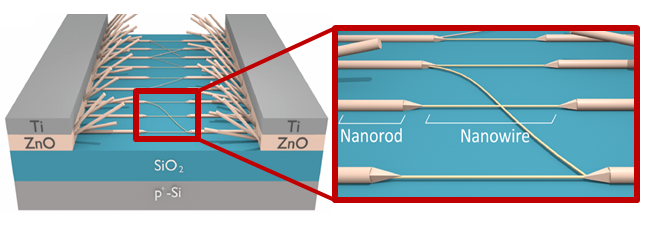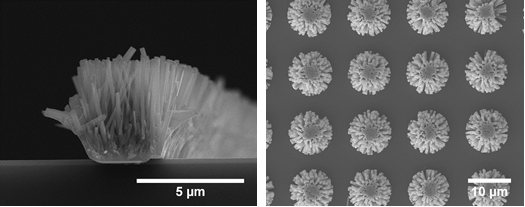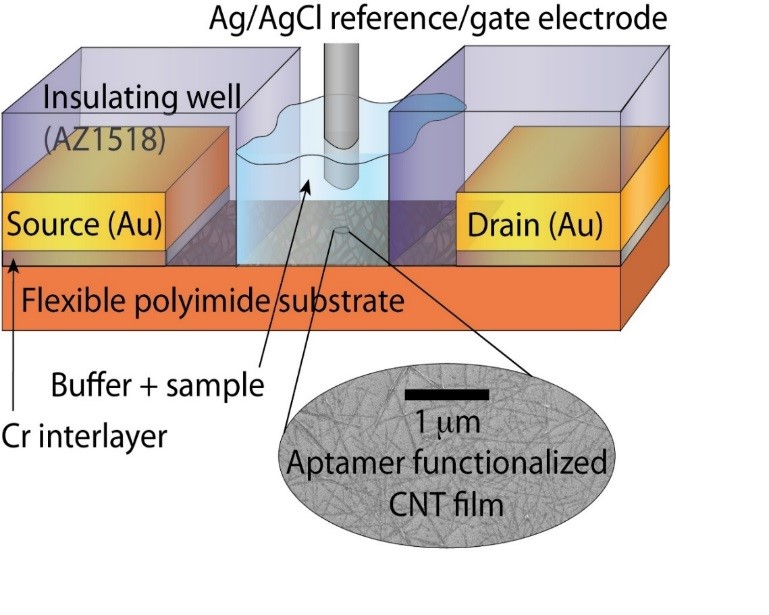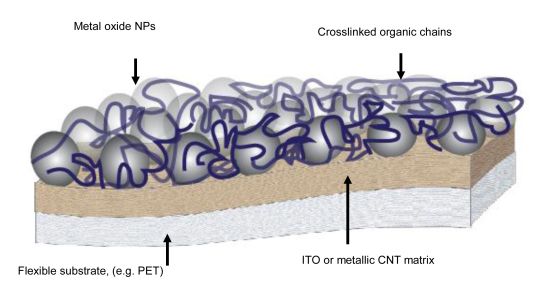Research projects
Discover current research projects from the Nanomaterials devices research group.
Carbon nanotube thin films for sensing platforms

Carbon nanotubes are a fascinating material for anyone with an interest in electronic devices. Depending on how the nanotube formed during synthesis the electronic properties can range between semiconducting and metallic.
We are developing low cost solution processable methods to deposit thin films of carbon nanotubes for either field effect transistor applications (semiconducting) or as transparent electrodes (metallic). We integrate these films into working devices for sensors.
ZnO nanowires, synthesis, and device fabrication

ZnO is a wide bandgap semiconductor with potential in a wide array of device applications, including field effect transistors and optoelectronic devices. We synthesise ZnO nanorods and nanowires in controlled locations using hydrothermal synthesis for field effect transistor applications.

We also investigate the controlled growth of ZnO vertical arrays in controlled locations. By controlling the growth position and the recipe being used, we can control the aspect ratio of the nanowires making them suitable for new applications.
Functionalisation of nanomaterials for biosensors

Non-destructive functionalisation routes for carbon nanotube field effect transistor sensors and for ZnO nanowires are being explored. The nanomaterial channel must be functionalised without causing any detrimental effect on the electronic properties of the nanomaterial, while maintaining the new functionality. This work aims at selective sensor development, notably via aptamer functionalisation for high sensitivity selective sensors.
Flexible electronics

The use of nanomaterial channels and the use of solution processable device fabrication routes allow us to make devices on flexible electronics. Part of this work includes the development of flexible dielectrics, and thin film devices that can be fully integrated onto plastic substrates.
Research funding
Our research is funded through the Marsden Fund and the MacDiarmid Institute.
Collaborators
We work extensively with other researchers within the MacDiarmid Institute, as well as teams at Plant and Food Research and Paihau—Robinson Research Institute.
Current research activities
Qualified students with an interest in any of these project areas should contact Natalie Plank.
